Married at 17, Meena Gurung from Lamjung district, a remote mid-hill region of Nepal, suffered the loss of her firstborn child without her husband by her side. He, like an estimated 2.1 million Nepali men, had gone abroad to work, leaving Gurung behind to work in the fields and tend to the household. Gurung relies on subsistence farming for her livelihood and has little or no access to a variety of diverse and nutritious goods, such as green leafy vegetables and protein, to ensure proper nutrition. As a result, she and her child were malnourished.
A byproduct of poverty, poor nutrition is a major public health concern across Nepal’s rural areas, where about 80 percent of the population lives, and death is all too common.
One out of three women and five out of 10 children are anemic. The statistics just get more depressing from there: One out of 19 children dies before his or her fifth birthday due to treatable causes, such as pneumonia, diarrhea and malnutrition. Over 40 percent of children under age 5 suffer from stunting, a severe form of chronic malnutrition in which a child suffers permanent physical and cognitive damage, resulting in serious health, social and economic consequences.
“Such nutritional deficiencies mean a whole generation of workers in Nepal with reduced economic potential,” says Shanda L. Steimer, director of USAID/Nepal’s Office of Health and Planning. “For a resource-limited country like Nepal, this has devastating consequences for the country’s socio-economic development and anti-poverty efforts.”
To address this and build a brighter future for Nepal, the Nepal Government developed a five-year nutritional plan of action in 2011 that promotes a lifetime of optimal health and nutrition for mothers and their children. To complement this effort, USAID introduced the Suaahara program, which means “good nutrition” in Nepali, in 25 of Nepal’s most undernourished districts.
Suaahara works closely with the government to improve the health and nutritional status of pregnant and lactating women, and children under 2. The project integrates nutrition, agriculture, food security and health activities such as small-scale backyard farming; poultry farming; improved child feeding practices; and nutrition, hygiene and maternal and child health care education.
“While all mothers want the best for their children, poverty, traditional food practices, and lack of knowledge related to health, sanitation and nutrition can be all that stands between mother and her deepest desire for healthy children,” says Peter Oyloe, chief of party for the Suaahara project.
The Suaahara project relies primarily on a cadre of 50,000-plus female community health volunteers and community extension workers to deliver health and agriculture messages and services in communities, many of whom have been trained by Suaahara. Sample messages include the health benefits of exclusive breastfeeding, timely transition from breastfeeding to complementary feeding (solid and semi-solid foods) from 6 to 24 months of age, and washing hands before feeding children.
“As a global nutrition community, we now know the critical importance of integrated projects to achieve maximum effectiveness. Suaahara does this, and that is why it’s showing impressive initial results,” said Patrick Webb, dean for academic affairs of the Friedman School of Nutrition Science and Policy at Tufts University.
In just two years, Suaahara has improved food security and nutrition for 74,000 families. The prevalence of exclusive breastfeeding of children under 6 months has increased from 46 to 68 percent, and the number of children between the ages of 6 and 23 months meeting their minimally recommended nutrition intake increased from 36 to 47 percent.
Second Chances
When Gurung gave birth to her second baby, Yushida, she was still unfamiliar with the importance of proper nutrition for infants. In her effort to make her daughter healthy, she started feeding her non-nutritious food such as rice porridge mixed with unclean water at 5 months. Yushida suffered frequent bouts of diarrhea as a result.
Gurung was pregnant for a third time when she met Ram Maya Shrestha, a local female community health volunteer, who was hosting a session in her village for “1,000 days” mothers—those who are pregnant or have children under 2. Approximately 18 women attended Shrestha’s session to learn about the importance of nutrition, hygiene and health services.
“Earlier, I used to meet women who’d lost three to five children due to inappropriate care of mothers during pregnancy, and both mothers and children during and after delivery,” says Shrestha. “Thanks to the training and constant counseling in the village for pregnant women and new moms, there have been significantly fewer deaths of babies in our village.”
Initially, many of the concepts taught in the training were difficult to understand for Gurung, such as the need to wash hands thoroughly on a regular basis. Yet after detailed demonstrations by Suaahara field staff, and explanations as to how hand washing and other practices could improve one’s health, Gurung slowly started to accept and incorporate them into her daily life.
Unlike her earlier pregnancies, when she sought traditional healers and gave birth at home, Gurung made sure to get enough nutritious foods this time. She attended four antenatal checkups, during which she received iron tablets and a vaccination against tetanus. She also began to wash her hands thoroughly before feeding Yushida, now almost 6 years old, meals that included green vegetables, meat, eggs and clean drinking water.
Recently, Gurung gave birth to a healthy baby girl, Supriya, in a hospital with a skilled birth attendant. She plans to exclusively breastfeed her for the first six months.
“Compared to my elder daughter, Surpiya does not fall sick as often. In my ignorance, I was doing everything wrong while raising Yushida, but thanks to Suaahara training and Ram Maya Shrestha, I have finally learned to do the right things for the healthy development of my two daughters,” says Gurung.
Over the next two years, Suaahara will continue to refine its approach in developing a stronger package of nutrition-focused interventions that could potentially be used as a model for other countries. At the local level, Suaahara is working to stimulate local government investments in areas that will ensure sustainability of the nutrition gains among project participants.
“Fourteen Village Development Committees in Lamjung district alone have allocated budgets for nutrition-related activities for ‘1,000 days’ mothers, disadvantaged groups and children to help improve nutritional status,” said Bishnu Dutta Gautam, a local development officer in Lamjung district. “While the budget allocated might not be a huge amount, it is a start to something good and a much-needed initiative.”
Pallavi Dhakal is with Save the Children.
- A mother who has sufficient levels of iron, folate and iodine
-
Immediate breastfeeding within the first day of birth, exclusive breastfeeding to age 6 months, and occasional breastfeeding up to 24 months and beyond
-
Complementary feeding starting at 6 months with nutrient-rich foods
-
Where nutrient-rich foods are not available, consumption of fortified complementary foods and, when needed, supplementation with micronutrients such as vitamin A, iron and zinc
-
Continued feeding during and after illness with sufficient fluids and foods







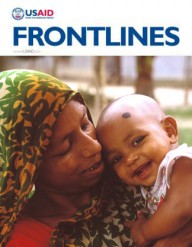

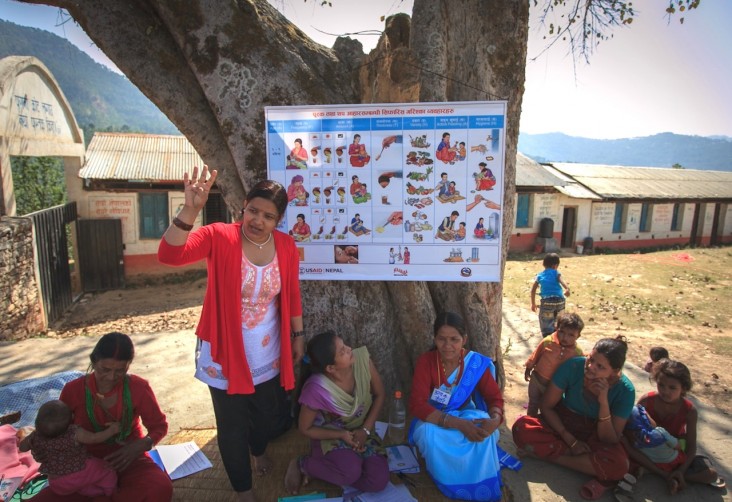
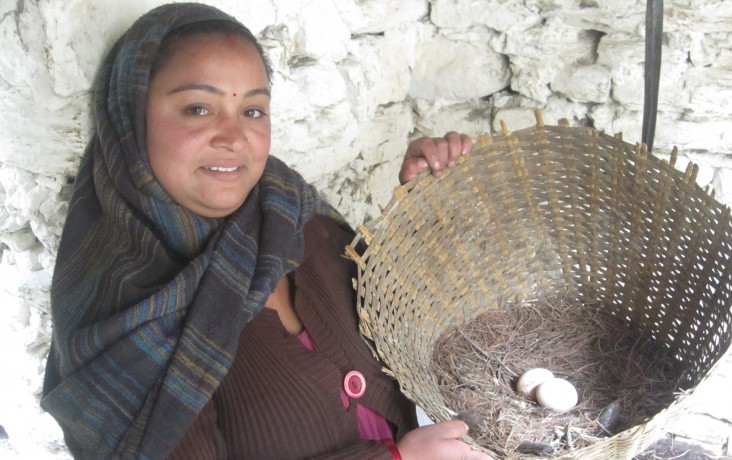
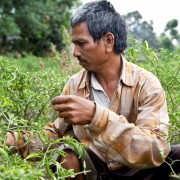
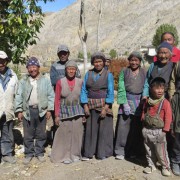
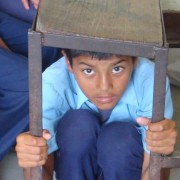
Comment
Make a general inquiry or suggest an improvement.